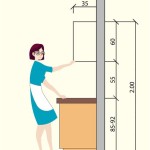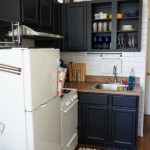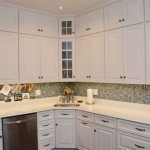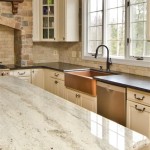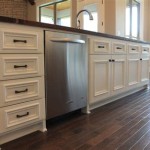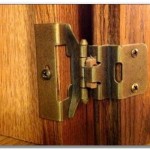How To Cut Crown Molding On Kitchen Cabinets
Adding crown molding to kitchen cabinets elevates the space, providing a polished and finished look. However, cutting crown molding accurately can be daunting for DIY enthusiasts. This article outlines the process, providing a clear guide for achieving professional results.
Understanding Crown Molding Angles
Crown molding is designed to sit at an angle between the wall and the cabinet. This angle creates the distinctive sloping profile. Understanding these angles is crucial for accurate cuts. Typically, crown molding is installed at a 45-degree angle to both the wall and the cabinet top. However, variations can occur depending on the specific molding profile and ceiling height. Therefore, it's essential to double-check the intended angle before commencing any cutting.
Tools and Materials Required
Having the right tools is paramount for success. The following tools and materials are recommended:
- Crown molding
- Measuring tape
- Pencil
- Safety glasses
- Miter saw (preferably a compound miter saw)
- Coping saw (for inside corners)
- Finish nailer
- Wood glue
- Caulk
- Safety gloves (optional)
- Molding adhesive (optional)
Measuring and Marking
Accurate measurements are the foundation of a successful installation. Measure the length of the cabinet run where the molding will be placed. Transfer these measurements onto the back of the molding, ensuring the measurements are precise. Marking the top edge of the molding, representing the ceiling side, helps maintain consistent orientation during cutting.
Cutting Outside Corners
Cutting outside corners involves mitering the molding at opposite 45-degree angles. When placed together, these angles form a 90-degree corner. The key is to orient the molding on the saw correctly. The molding should be placed upside down and against the fence of the miter saw, mimicking its position on the cabinet. This ensures the correct bevel and miter angles are applied.
Cutting Inside Corners
Inside corners can be approached in two ways: mitering or coping. Mitering inside corners can be challenging to get perfectly aligned, often requiring adjustments and fillers. Coping, however, offers a more precise fit. Coping involves cutting the molding at a 45-degree miter, then using a coping saw to carefully shape the profile of the molding to match the adjoining piece. While requiring more skill, coping produces a cleaner, more professional result.
Utilizing a Compound Miter Saw
A compound miter saw simplifies the process by allowing simultaneous bevel and miter cuts. This is particularly useful for crown molding, which requires both angles. When using a compound miter saw, consult the saw's manual for specific instructions on setting the correct bevel and miter angles for crown molding. Ensure the molding is securely held against the fence and the blade is sharp for clean cuts.
Nailing and Securing the Molding
Once the molding is cut, position it against the cabinet and wall, ensuring a tight fit. Secure the molding using a finish nailer, driving the nails through the molding and into the cabinet framing. Space the nails appropriately, typically every 12 to 16 inches. For added strength, apply a thin bead of wood glue to the back of the molding before nailing.
Finishing Touches
After installing the molding, fill any nail holes with wood filler and allow it to dry. Caulk the seams where the molding meets the wall and cabinet to create a seamless appearance. Caulking not only enhances aesthetics but also seals gaps, preventing moisture and pest intrusion. Once the caulk is dry, the molding can be painted or stained to match the cabinets or the surrounding décor.
Dealing with Irregularities
Walls and cabinets are not always perfectly straight. Slight irregularities can affect the fit of the molding. In such cases, minor adjustments during the cutting process may be necessary. Shims can be used to fill small gaps and ensure a tight fit. For larger gaps, flexible caulk can be employed to conceal imperfections. Patience and careful adjustments are key to overcoming these challenges.
Cabinet Crown Molding
10 Steps To Install Crown Molding On Cabinets Fine Homebuilding
Adding Crown Molding To Kitchen Cabinets Young House Love
Kitchen Cabinet Crown Molding Reality Daydream
How To Install Kitchen Cabinet Crown Molding Family Handyman
Cabinets Com Crown Molding Kitchen Cabinet Moulding
Crown Installation On Kitchen Cabinets Issue Moulding Molding Cabinet
Installing Crown Molding On Kitchen Cabinets
Installing Kitchen Cabinet Crown Molding
How To Miter Crown Molding At Any Angle The Kim Six Fix
Related Posts

